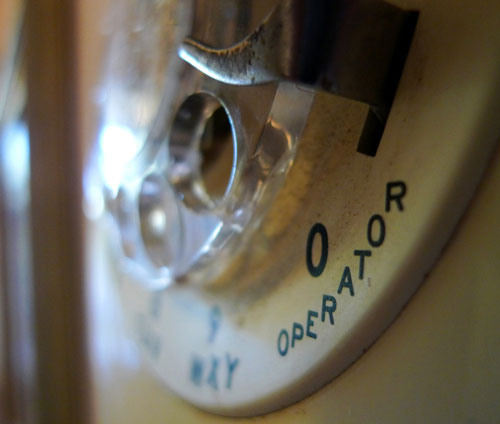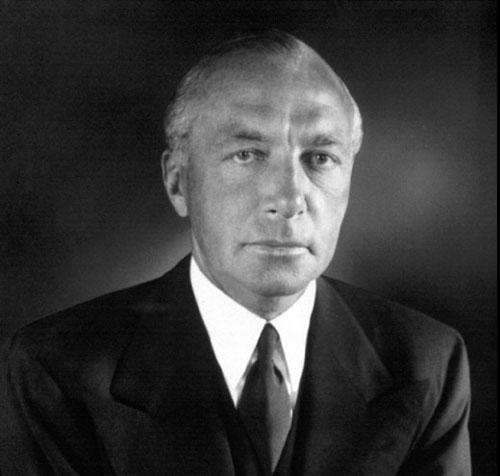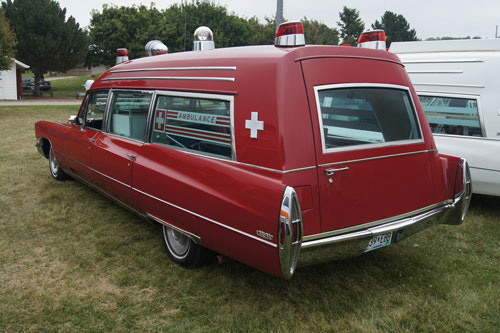In Case Of Emergency
The nationwide roll-out of the 911 system was a difficult endeavor, and one that only made it past the finish line thanks to a charitable foundation.
Are you going to ask your GF to marry you? You don’t have to do a “viral” marriage proposal video, but it doesn’t have to be boring either. Your partner will LOVE a customized proposal at the museum. We’ve helped about a dozen men pop the question and every one of their partners said yes! Let us do the work, and you take all the credit.
Today's issue is sponsored by Museum Hack. (You can sponsor us, too.)
1937
The year of the creation of London's 999 system, the world's first emergency-number system with an easy-to-remember three-digit code. (Its 80th birthday is actually this month, June 30 to be specific.) The system, which was originally run by the post office, didn't get its first call until about a week in, but it's gotten a whole lot more since then. Despite the relatively early date of the creation of the system, the United States lagged behind by decades.

Operator, can you help me place this call? (Dean Terry/Flickr)
The challenges of calling for emergency help before there was 911
The thing about the United States is that it's big, laid out confusingly, and full of municipalities big and small. And getting them all on the same page with something as simple as an emergency code is really friggin' hard.
But clearly there was some need for such a system, because people were calling random places to get emergency service. A 1921 article from Public Service magazine highlights the complexities of the situation, noting that New York City's Bellevue Hospital was fielding as many as 2,500 emergency calls per day.
And every city and municipality is different. A great way to think about this is with a modern-day example: The neighborhood-based online service EveryBlock is only in a few cities, while the much larger NextDoor is pretty much everywhere. The reason for this is a basic functional difference: Because EveryBlock relies on public data acquired from municipalities, it has to theoretically make deals with every single city in the country, which limits its scale.
Now just imagine the problems that patchwork of municipalities created in the days before 911. One example I spotted from a 1946 Washington Post article describing a woman whose apartment was on fire highlights the rigamarole of pre-911 emergency calls: "[S]he tried vainly to reach an operator by dialing the emergency number '311.' In her excitement she forgot the fire control center's number, Union 1122."
In 1958, a New York City woman named Rosamund Reinhardt pointed out the severity of the problem when she attempted to call in a fire at a nearby apartment. But she dialed the easiest number she knew: 0, for operator.
That did not work very well; being someone who lives in the busiest city in the country, she was forced to compete with every other person dialing the operator at the time, meaning she kept getting dropped lines. In a New York Times letter to the editor, she noted that the awkwardness of the system had put her in danger.
"The reason it seemed so long to me was that I discovered the time I had wasted in telephoning was just enough to prevent my getting out of the apartment, as the hall was impassable due to smoke," she recalled.
Clearly, she survived. But the situation raised an incredibly obvious question for her: “Would it not be possible to cut out the operator stage by dialing directly some prearranged emergency number?”
So why was this not the case for the United States? Simply, the ball hadn't rolled quickly enough in that general direction.
The fire industry had long been debating the issues of how the telephone system would work during emergencies—in part because fire alarms relied on the system. A 1920 article in the Quarterly of the National Fire Protection Association, for example, highlighted a debate over whether to replace telegraph alarms with telephone alarms. And in the 1950s, some cities (notably Miami) had installed single-use physical telephones on city streets so that people could talk directly to the fire department if an emergency hit. (This setup, of course, led to lots of false alarms, along with a lot of controversy.)
But by the mid-1950s, officials from the International Association of Fire Chiefs (not the National Association of Fire Chiefs, as is sometimes cited, as that is not an organization) were starting to make the case for a single, national telephone number for the public to call in case of an emergency. It was the ball that rolled down the hill. Eventually.
“Provision of a single, primary three-digit emergency number through which emergency services can be quickly and efficiently obtained would provide a significant contribution to law enforcement and other public service efforts by making it less difficult to quickly notify public safety personnel.”
— A passage from the Warren-911-Emergency Assistance Act, a bill signed into law in California in 1973, thanks in no small part to legislator Charles Hugh Warren convincing then-governor Ronald Reagan that it was a good idea to create the law and pay for it with a small surcharge on phone bills—a tax, essentially, but one that Warren made a compelling argument for. It was a significant legislative action, perhaps the feather in the cap of Warren's entire career, and it set the stage for many similar laws and regulations nationally.

Robert Wood Johnson II, the namesake of the Robert Wood Johnson Foundation. (Kilmer House)
The foundation that made the 911 system a reality nationwide knows all about bandages
To tell the story of the start of the 911 system—a phone call made by Alabama Senator Rankin Fite on February 16, 1968, made a little more than a month after AT&T officially designated the efficient-on-rotary-phones number—is to tell but half the story of the creation of the 911 system.
Because if a system for emergency treatment is to exist, it needs to work immediately. And in many parts of the country, it did not. To offer frame of reference you're familiar with: You know how the vehicle from Ghostbusters is a white hearse? That's because vintage ambulances were hearses. And in some rural towns, the hearses from the funeral homes pulled-double duty—and the funeral home employees didn't have much in the way of instruction beyond "drive fast." The EMT, as a concept, was still a few years off.

An ambulance hearse. (Greg Gjerdingen/Flickr)
That doesn't leave any room, of course, for much in the way of medical treatment before people got to the hospital—during a critical period. And of course, these rural areas were often not served by AT&T, so their local companies weren't in a position to switch over to 911—as it was not legally mandated by any single national law. (Even big cities, for reasons that can be best described as bureaucratic in nature, initially held their noses at the thought of 911.)
Fortunately, there was a new charitable foundation on the block that was in a position to help cover the gaps.
Robert Wood Johnson II, whose father had started Johnson & Johnson, had recently died at the time that the modern emergency apparatus was coming to life, and when the Robert Wood Johnson Foundation started in 1972, the medical world suddenly had a billion-dollar foundation ready to help—as the younger Johnson had turned the company into a corporate force (thanks in no small part to Band-Aids).
The foundation's earliest efforts, launched with a $15 million grant, focused on improving emergency services in poorly served rural areas. A side effect of the improvements was that these areas tended to pick up 911, or at the very least, a similarly centralized number. In a case study for Duke's Center for Strategic Philanthropy & Civil Society, author Scott Kohler noted that the the program's effects were most obvious thanks to the uptake of 911:
Progress in the emergency response capabilities of the forty-four grant recipients was considerable. One of the most visible developments associated with the program was the expansion of the 911 emergency system. In 1973, only 11 percent of people in the areas supported by the Johnson Foundation program had access to 911, or some equivalent emergency phone number. By the program's end, in 1977, 95 percent of them did. These outcomes were not mirrored in the nation as a whole. In 1979, only 25 percent of the U.S. population was covered by 911 or its like. Even today, the 911 system is available to only 85 percent of the population. But progress in the Foundation's forty-four grant areas did serve as a model of the emergency phone number's effectiveness. In this way, Foundation dollars were the spur that encouraged subsequent federal support.
The Johnson Foundation has remained a major advocate for 911's growth, and isn't afraid to speak about the results of the organization's early charitable work.
"Back in the early 1970s, when the Foundation was young, we realized that the nation’s emergency response system wasn’t much of a system at all," the foundation stated on its website. "Ambulance crews could not communicate with other ambulance crews. Nor could they share critical patient information with their destination hospitals. Only 12 paramedic crews existed in the entire country. Nothing like the 911 system existed at all."
Now, the 911 system very much exists—as does the proper infrastructure to back it. (Congress designated 911 the official emergency number in 1999, three years after Rescue 911's run had ended. Sorry, Shatner.)
The problem is that it has to keep pace with the way we use our phones.
"While the existing 9-1-1 system has been a success story for more than 30 years, it has been stretched to its limit as technology advances."
— The National Emergency Numbers Association, discussing the issues around the modern-day 911 system. Since 2000, the group has been working to upgrade the system for modern-day needs such as texting, IP-based phone systems, and detecting the global positioning of smartphones. The federal government has as well, but the high costs and complexities of doing the upgrades in many municipalities threatens the long-term potential of the project—something former FCC chairman Tom Wheeler warned about in a 2015 New York Times op-ed.
I'd like to make an argument here. Perhaps William Shatner could help me out with this. He seems like a good guy, and his appearances and narration on Rescue 911 probably did more to help the cause of the national 911 system than a lot of other things tried.
Rescue 911 has not aired a new episode in more than 20 years. It has not aired in syndication in the United States in more than a decade. You cannot buy episodes of this show on DVD, either.
It makes sense: These are the kinds of stories that go out of date. The kid in that dog-stuck-in-wall video is probably 40. But since the show's heyday, a lot of technology has become very common—specifically, smartphones.
Smartphones are infamously problematic for emergency dispatchers. They come with GPS capabilities that are hard to tap into—at least in the Uber-friendly way we're used to. People, for obvious reasons, want to send text messages.
But 911 systems are often terribly out of date, and require expensive upgrades that can negatively affect the quality of service being offered to local communities. The problems that made rolling out the 911 number so difficult in the first place have not gone away. In fact, they've even gotten worse in some cases. Earlier this year, there were two spates of outages that affected areas covering millions of people.
The public will not be aware of these problems if they just dialed this number that's been repeatedly drilled into their brains over the last 40 years. Really, we need to inform them through the most universal medium we still have—television—of the complications that the system currently has.
Because that might energize the public to demand fixes and ongoing progress for what is truly a vital resource. It needs to keep up with the times. Maybe Rescue 911 could help.
Emergencies don't go away with better technology.
:format(jpeg)/2017/06/tedium062017.gif)
/2017/06/tedium062017.gif)


/uploads/ernie_crop.jpg)